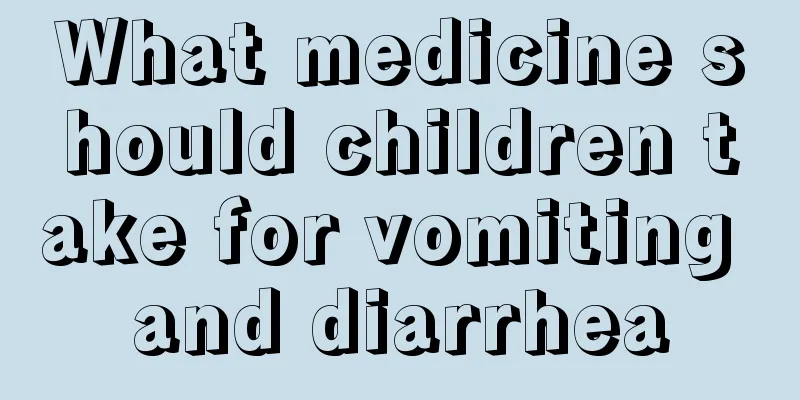What is the itchiness on the child's body?

|
Children's skin is usually very fragile. Some skin diseases, if not caused by external factors, are likely to be caused by a lack of certain trace elements. Everyone should know that trace elements have a huge impact on the human body, and their lack will cause some diseases in the body. Some parents find that their children are always itchy. So what trace elements can be inferred from the itching in their children? Vitamin B2 and Vitamin B2 Deficiency: Vitamin B2, also known as riboflavin, is the vitamin most easily lacking in the diet of Chinese residents. Susceptible population: People of all age groups are susceptible to various diseases due to deficiency. Clinical manifestations: Angular cheilitis: wet and white corners of the mouth, cracks, bleeding, erosion, and scabs Glossitis: tongue swelling, cracks, pain, atrophy, thick tongue coating, partial shedding to form a map-like shape Cheilitis: dry, cracked, swollen, bleeding, ulcerated lips Eye inflammation: blurred vision, photophobia, tearing, decreased vision, eye fatigue, corneal congestion Skin symptoms: It causes seborrheic dermatitis, which often occurs on the sides of the nose, cheeks, forehead and between the eyebrows. The male scrotum is itchy, red, swollen, scaly, exudative, scabbed and painful. Female genital itching, inflammation, and increased vaginal discharge Secondary anemia: a series of manifestations of iron deficiency anemia may occur Prevention: Arrange your diet properly and eat more foods rich in riboflavin. Food sources of vitamin B2: Animal foods, especially animal offal such as liver, kidney, heart, as well as eel, eggs, milk, etc. are rich in riboflavin; among plant foods, beans and green leafy vegetables contain more riboflavin, while cereals, general vegetables and fruits contain less riboflavin. Vitamin B2 content of some common foods Food name VB2 content (mg/100g) Food name VB2 content (mg/100g) Pork liver 2.08 Milk 0.14 Pork (fat and lean) 0.16 Wheat flour 0.08 Sheep kidney 1.78 Rapeseed 0.11 Chicken liver 1.10 Rice 0.05 Egg 0.32 Cucumber 0.03 Vitamin C and Scurvy: Vitamin C, also known as ascorbic acid, can cause scurvy if the human body does not take enough vitamin C. Susceptible population: People of all age groups may become ill due to insufficient intake. Childhood scurvy is common in infants and children under 2 years old Clinical manifestations of scurvy: Loss of appetite, fatigue, irritability; painful, swollen and bleeding gums; in severe cases, gum ulcers, loose teeth, and even falling off; dry skin, spots and spots on the skin, and even large bruises under the skin; subperiosteal hemorrhage in the lower limbs, leg swelling and pain; the child's legs are abducted and the calves are bent inward like "frog legs"; conjunctival hemorrhage, subperiosteal hemorrhage in the eye socket can cause protruding eyeballs; subperiosteal hemorrhage, easy fractures, bone atrophy; pale complexion, shortness of breath and other anemia symptoms; low immune function, susceptibility to various infectious diseases Prevention of Vitamin C Deficiency: Arrange meals reasonably and eat fresh vegetables and fruits regularly, but pay attention to the correct processing and cooking methods when eating vegetables - stir-fry more, boil less, and do not add alkali to minimize the loss of vitamin C. Food sources of vitamin C: It mainly comes from fresh vegetables and fruits, such as peppers, spinach, tomatoes, tangerines, oranges, and sour dates; only liver and kidneys of animal foods contain a small amount of vitamin C. Vitamin C content of some common foods (mg/100g): Food Name VC Content Food Name VC Content Chinese cabbage 28~47 Orange 33 Bell pepper 72 Apple 1-6 Spinach 32 Orange 11~33 Rapeseed 36 Banana 8 Red Fruit 53 Milk 1 Vitamin D deficiency: rickets in children and osteomalacia in adults: Susceptible groups: Rickets in children is common in children under 3 years old, especially infants under 1 year old; adult osteomalacia is more common in pregnant women, nursing mothers and the elderly. Clinical manifestations of vitamin D deficiency: Symptoms of rickets in children: Children often have symptoms such as sweating, easy fright, large fontanelle, delayed tooth eruption and baldness on the occipital area. Children who have been ill for more than 3 months will develop ping-pong head, that is, there is a feeling of ping-pong ball when pressing on the back of the head on both sides; the junction of the ribs and cartilage on both sides of the front chest bulges outward to form "rib beads"; the lower edge of the ribs is turned outward; the chest bulges forward to form "pigeon chest"; the spine is kyphotic to form a hunchback; the knees of both lower limbs are bent outward to form "O" legs or inward to form "X" legs; the wrists and ankles are rounded and bulging to form "bracelets" or "anklets", etc.; the abdominal muscles are weak and the abdomen is bloated. Children with this disease have slow growth and development, low immunity, are susceptible to diseases such as pneumonia and diarrhea, have a high mortality rate, and are prone to fractures. |
<<: Middle school students with myopia
>>: Why does the little boy sweat so much?
Recommend
What are the symptoms of hernia in children?
It is quite common for children to have hernias, ...
Eight-month-old baby fell on his forehead
If your eight-month-old baby falls on the forehea...
What should I do if my child feels phlegm in his throat?
Children often suffer from one disease or another...
What to do with myopia in children? Several common treatment methods
Parents of today's children usually do not pa...
How to reshape canine teeth? Three things you need to know
Since canine teeth play an important role in the ...
What should I do if my 4-year-old baby drools?
The child has been sweating since he was young, a...
Why do children cry when they sleep at night?
As adults, after a day's work, we can really ...
TCM tips for preventing and treating children's summer colds
A cold is a general term for upper respiratory tr...
How teenagers can protect their teeth
The importance of teeth is self-evident. To ensur...
Is it normal for babies to have uneven breathing?
Because every family now has only one child, and ...
At what age does a baby stop eating formula?
During the baby's growth process, if there is...
What are the symptoms of teething discomfort in babies?
Teething is a part of every baby's growth exp...
Introduction to the book "Secrets of Pediatric Massage"
We have said that children are the treasures of t...
Do all children's teeth need to be replaced?
When children reach a certain age, their teeth be...
Why is the baby's hand peeling?
The skin of babies is usually very fragile. Some ...









